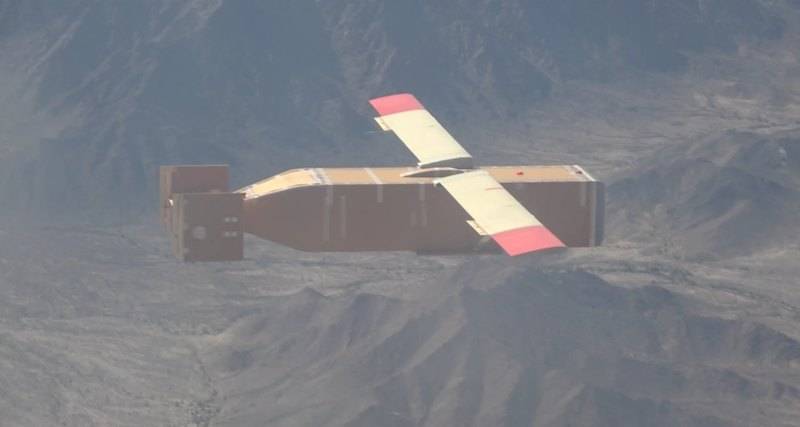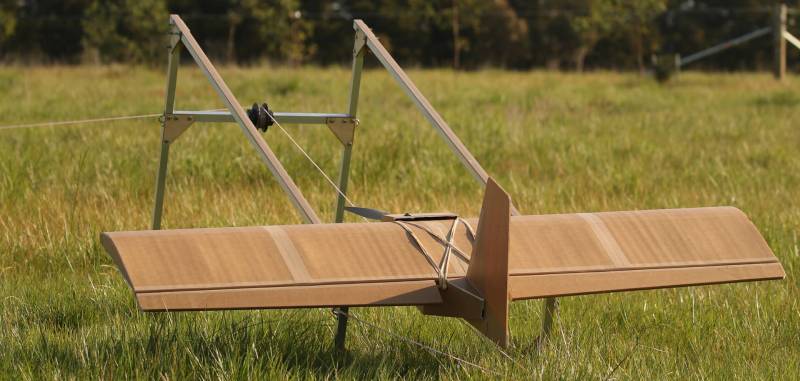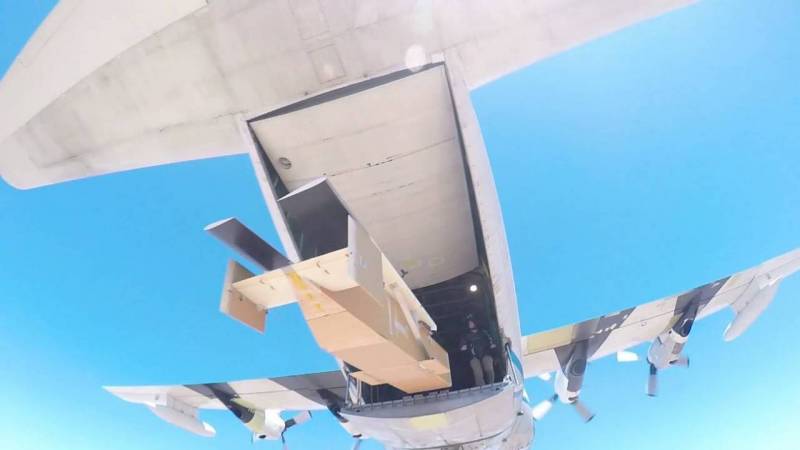Does Russia need plywood glide bombs?
And again, we are forced to return to the topic of the use of unmanned aircraft in the NVO zone. The appearance in service with the Armed Forces of disposable Corvo Precision Payload Delivery System (PPDS) drones from the Australian company SYPAQ, naturally, caused megatons of jokes and ridicule from the domestic jingoistic public. But are these “stupid fools” as funny as some homegrown military experts try to make it out to be?
To complete the picture, one should remember from which project the “funny” Australian disposable drones grew out of. As is often the case, behind such a non-trivial technical solution is the Defense Advanced Research Projects Agency (DARPA) of the US Department of Defense.
Parcel for your boy
Several years ago, under the order of the US Marine Corps and DARPA, as part of the TACAD (Tactical Air Delivery - Tactical Air Delivery) program, Logistics Gliders developed a project of super-budget air transport for the delivery of military cargo with minimal risks. In a zone of active combat operations, the supply of VTA aircraft or helicopters can be seriously complicated due to the risks of falling under enemy air defense or the banal absence of an entire runway.
Instead of fencing an expensive unmanned system, the Americans decided to go the way of maximally simplifying and reducing the cost of the design. Two versions of the UAV were developed under the names LG-1K with the participation of specialists from the Marine Corps Warfighting Laboratory and LG-2K in cooperation with DARPA. These are non-motorized aircraft of normal aerodynamic design, most of the parts of which are made of plywood, outwardly resembling “flying suitcases” with their rough contours. As a matter of fact, this is what they are.

Plywood drones are launched from transport planes or helicopters and glide to their target using a primitive control system consisting of satellite navigation and an autopilot that controls the ailerons and tail fins. Telemetry and video signal from the nasal camera are transmitted to the operator's console. LG-1K has a length of 3,2 m with a wingspan of 7,1 m, carrying capacity - 320 kg of payload. LG-2K reaches a length of 3,9 m, its wingspan is 8,4 m, and its payload is 725 kg. The speed developed during non-motorized gliding is 280 km / h, and the maximum gliding range is 120 kilometers!
These disposable drones are as simple and cheap as possible to manufacture, while they can safely deliver ammunition, medicines, food and other payloads to the front line. After use, the fighters can dismantle the equipment and, if necessary, burn the plywood. American drones can be launched from cargo planes, convertiplanes and helicopters, both from the compartment and from the suspension. Once launched, the drones spread their wings and begin controlled gliding towards their target.
Technical the solution, in fact, is extremely interesting, opening up additional possibilities, which we will talk about at the end.
Swing for a penny, hit for a ruble
Australian drones Corvo PPDS (Precision Payload Delivery System) are a variation on this theme of unmanned transporters. Unlike the American ones, they are built not from plywood, but from even cheaper waxed cardboard, but at the same time they are equipped with the simplest engine. In terms of size, SYPAQ drones are seriously inferior to Logistics Gliders products, they can lift only 3-5 kilograms of payload, but the flight range is still impressive - up to 120 kilometers.

According to open data, the Armed Forces of Ukraine buy up to 100 such disposable drones in Australia every month, and more than XNUMX of them have been accumulated in total. We, of course, laugh at all this, believing that cardboard drones are only suitable for burning in stoves. But is it?
Just imagine for a moment that the Ukrainian military will put a warhead from a cluster bomb on primitive, worth about $ 600 Corvo PPDS drones and start sending hundreds of them to Russian positions. Or not on the positions of the RF Armed Forces in the NVO zone, but on the peaceful border cities - Belgorod, Bryansk, Kursk and others? Represented? Now imagine how to shoot it all down, because a cardboard drone flying at low altitude is a rather difficult target for an air defense system. Go and see it on the radar in time. Or, on the contrary, will the Armed Forces of Ukraine deliberately paste over Australian drones with conditional “foil” and other reflective elements and start sending hundreds of them to our positions during a large-scale offensive as decoys, overloading the Russian air defense? That's it.
Now let's take another look at the American Tactical Air Delivery project. What if a warhead weighing from 320 to 750 kilograms is placed in a plywood drone worth several thousand dollars and dropped from an airplane and helicopter at a distance of 120 kilometers from the target? This is a super-budget gliding bomb made of natural, environmentally friendly materials, which can still be spotted on the radar. Maybe the Russian army would also need such high-precision gliding munitions capable of hitting targets deep in the Ukrainian rear?
There is plywood in the country, it can be dropped from transport aircraft and helicopters without entering the zone of action of enemy air defense. It seems to be funny, but for some reason it's not funny.
- Sergey Marzhetsky
- Logistic Gliders Inc., DARPA, corvounmanned.com.au

Information